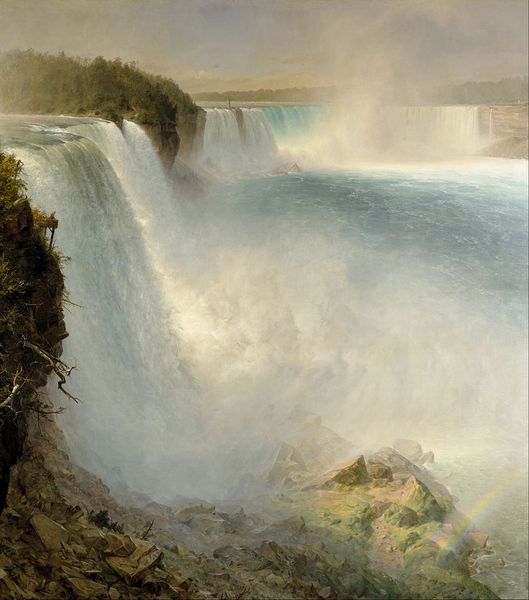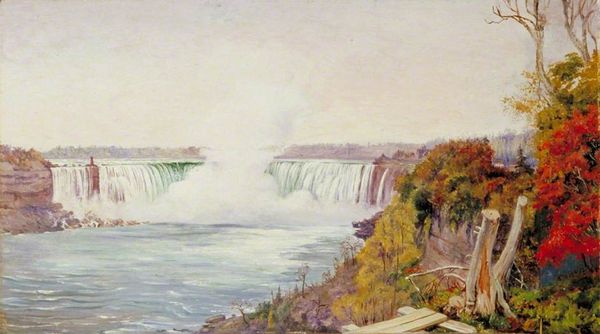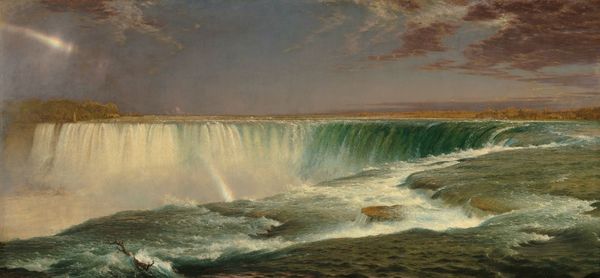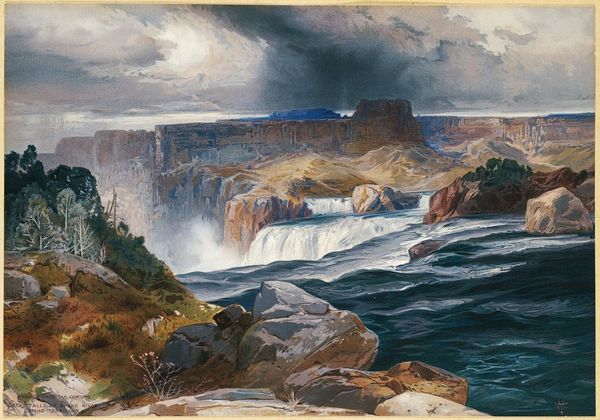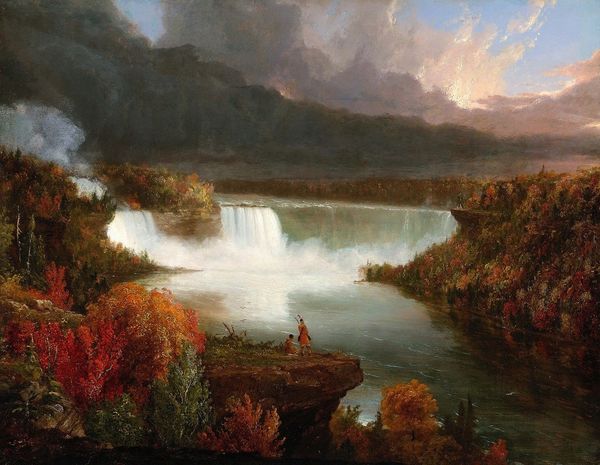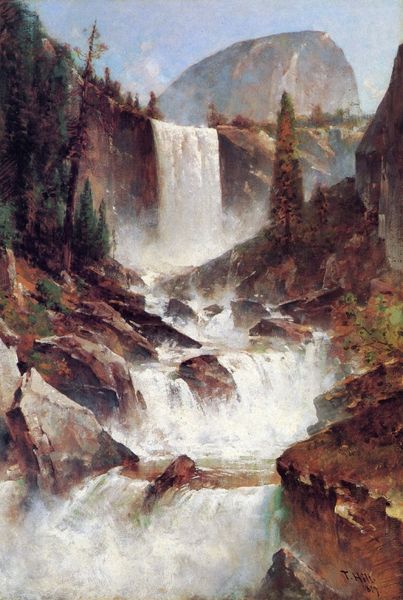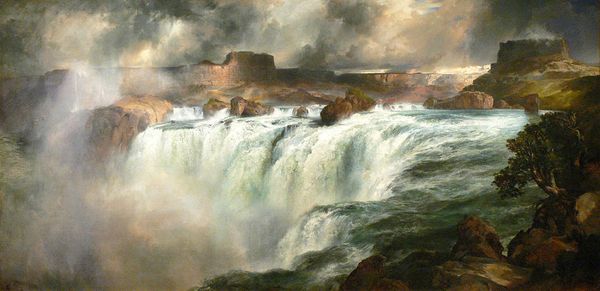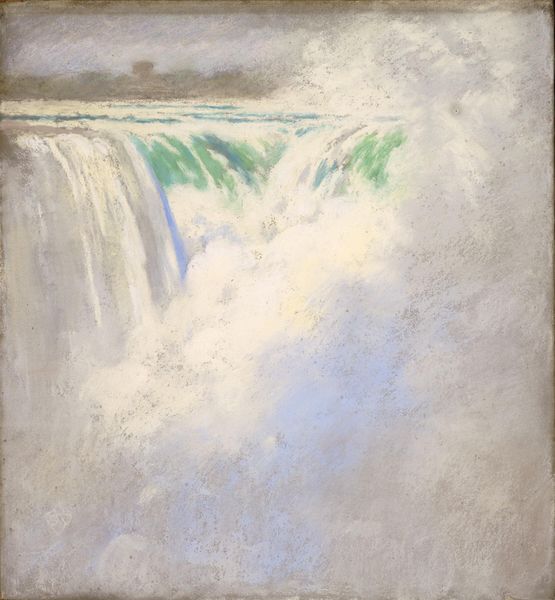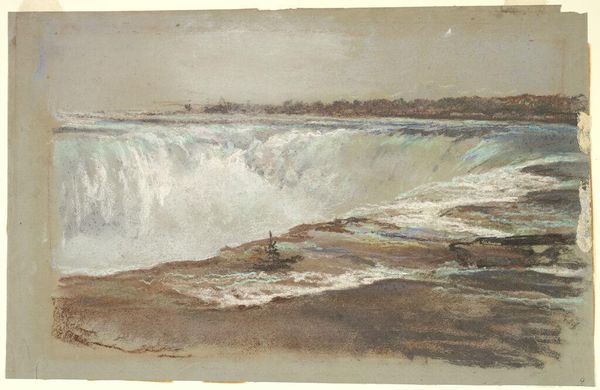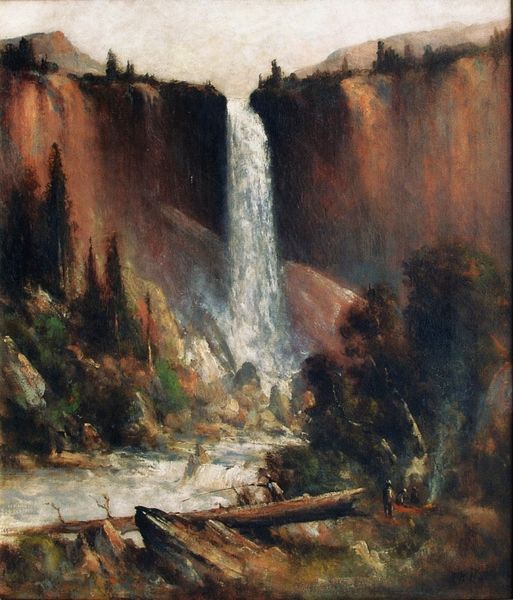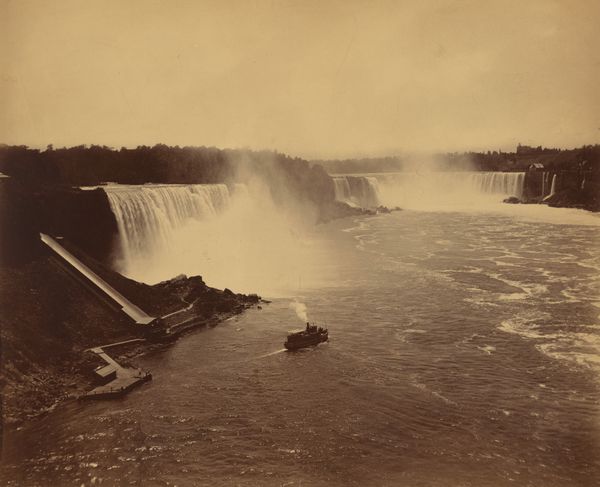
Dimensions: 48.3 x 68.6 cm
Copyright: Public domain
Editor: So, this is Albert Bierstadt's "Niagara," painted in 1869. Looking at it, I’m struck by how it captures both the awesome power and almost serene beauty of the falls. There's so much going on with light and mist, I can almost feel the spray! What jumps out at you when you see it? Curator: Immediately, the rainbow catches my eye, bisecting the misty torrent. Rainbows in art have always served as potent symbols. Think of the Old Testament, the rainbow as God's promise after the flood. Bierstadt, a painter deeply invested in the sublime power of nature, certainly understood that association. Do you see other recurring motifs or compositional techniques linking Bierstadt to artistic traditions beyond literal landscape? Editor: I guess I see some classic Romanticism with the focus on the grandeur of nature and the smallness of humanity in comparison. But it feels almost too…perfect. Like it's idealised? Curator: Precisely. That idealized vision connects to a broader 19th-century concept of America as a new Eden, a pristine wilderness untouched by the corruption of the Old World. Niagara Falls, in particular, became a symbol of American exceptionalism, its untamed power a metaphor for the nation's boundless potential. Editor: So the painting isn't just about the falls themselves, but also about what they represented to people at the time? Curator: Absolutely. It's about the cultural memory, the stories and beliefs that have become intertwined with this place. Bierstadt uses these established visual symbols—the rainbow, the immensity of the falls—to evoke a powerful emotional response, tapping into pre-existing ideas about nature, divinity, and national identity. Look closely, and consider the human desire to master the symbolic meaning of the wild frontier through the power of imagery. Editor: That really shifts my perspective. I was seeing a pretty landscape; now, I understand how packed with cultural meaning it is! Thanks, this was eye opening. Curator: Indeed. Visual representation serves to communicate an image now interwoven with historical and cultural context. It prompts us to interrogate meaning behind the images.
Comments
No comments
Be the first to comment and join the conversation on the ultimate creative platform.
